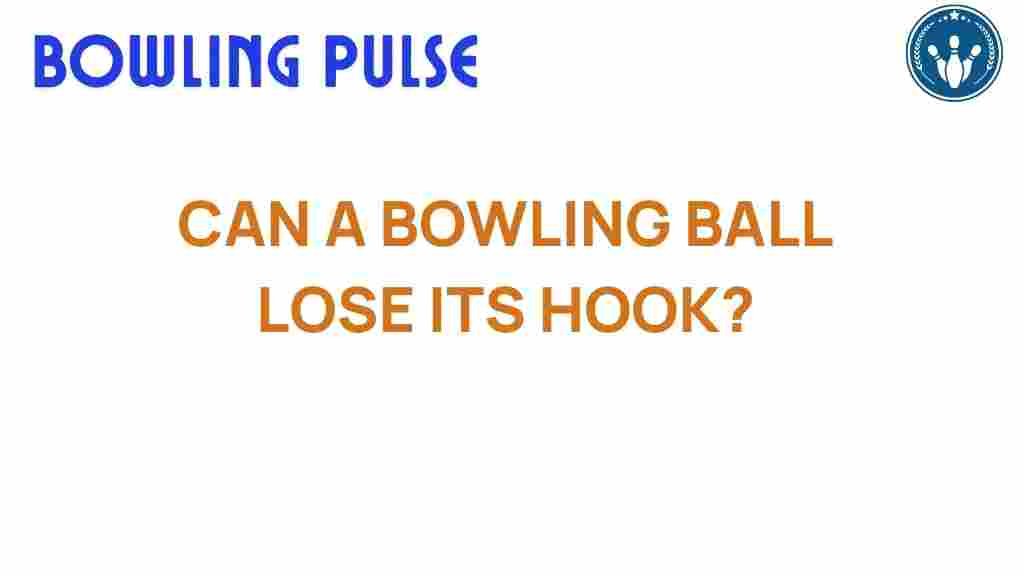The Mysterious Decline of a Bowling Ball’s Hook: Fact or Fiction?
In the world of bowling, the hook is a critical element of a successful delivery. It can make the difference between a strike and a split, and understanding why a bowling ball might lose its hook over time is essential for any serious bowler. Whether you’re a seasoned pro or a casual player, this decline in a ball’s hook can be perplexing. Is it a natural occurrence, or are there underlying factors at play? In this article, we will explore the dynamics of a bowling ball, the impact of maintenance on performance, and techniques to keep your bowling sport equipment in top condition.
Understanding the Hook in Bowling
The hook refers to the curved path a bowling ball takes as it rolls down the lane. This curve is influenced by several factors, including the ball’s surface texture, the oil pattern on the lane, and the bowler’s technique. A well-executed hook can lead to increased pin action and higher scores.
Factors Contributing to the Decline of a Bowling Ball’s Hook
Several factors can lead to the mysterious decline of a bowling ball’s hook. Understanding these can help bowlers maintain the performance of their equipment:
- Ball Surface Wear: Over time, the surface of a bowling ball can wear down, affecting its ability to grip the lane and create a hook.
- Oil Absorption: Bowling balls can absorb oil from the lane, which can lead to a decrease in performance. This is particularly true for reactive resin balls.
- Improper Maintenance: Failing to clean and maintain a bowling ball can significantly impact its hook potential.
- Bowling Technique Changes: As bowlers develop their skills, changes in technique can also lead to variations in the amount of hook produced.
Step-by-Step Process to Maintain Your Bowling Ball’s Hook
To ensure your bowling ball maintains its hook, it’s essential to follow a regular maintenance routine. Below is a step-by-step process:
1. Regular Cleaning
After every bowling session, it’s crucial to clean your ball to remove oil and dirt. Here’s how to do it:
- Use a microfiber cloth to wipe down the surface.
- Apply a specialized bowling ball cleaner according to the manufacturer’s instructions.
- Let the ball dry completely before storing it.
2. Resurfacing
Over time, the surface of your bowling ball may need to be resurfaced. This process restores the ball’s texture and helps maintain its hook. You can do this by:
- Using a resurfacing tool or taking it to a professional shop.
- Choosing the appropriate grit for your ball’s surface type.
3. Regular Inspection
Inspect your bowling ball for any signs of damage or wear. Look for:
- Cracks or dents on the surface.
- Discoloration, which may indicate oil absorption.
4. Adjusting Your Bowling Technique
Sometimes the decline in a bowling ball’s hook can be attributed to changes in technique. Work on maintaining consistent footwork, release, and follow-through to ensure you’re maximizing your ball’s hooking potential.
Troubleshooting a Declining Hook
If you’re noticing a decline in your bowling ball’s hook, here are some troubleshooting tips to consider:
1. Assess Your Equipment
Make sure your bowling ball is suitable for your style of play. If it’s too old or not designed for the current lane conditions, consider investing in a new ball. Refer to this guide on selecting the right bowling ball for more information.
2. Check Lane Conditions
The oil pattern on the lane plays a significant role in how your ball performs. Be aware of the following:
- Different patterns can affect how much hook you can achieve.
- Consider adjusting your line or speed based on lane conditions.
3. Consult a Professional
If you’re still struggling with your ball’s performance, it may be beneficial to consult a professional bowling coach. They can provide insights into your technique and suggest adjustments that could enhance your hook.
The Importance of Equipment in Bowling
In the sport of bowling, the right equipment is crucial for optimal performance. Here are some key elements to consider:
- Bowling Ball Selection: Choose a ball that suits your style of play and lane conditions.
- Weight and Grip: Ensure that the weight of the ball is appropriate for your strength and that the grip fits your hand comfortably.
- Shoes: Invest in quality bowling shoes that provide proper slide and traction.
Conclusion: Maintaining Your Bowling Ball’s Hook
The decline of a bowling ball’s hook is a concern for many bowlers, but with proper maintenance and attention to technique, you can keep your equipment performing at its best. Regular cleaning, resurfacing, and inspections are essential to ensure that your bowling ball retains its hook over time. Remember, the dynamics of your ball can change with lane conditions and personal technique, so staying aware of these factors will help you adapt and improve your game. Invest in your bowling sport, and you’ll reap the rewards in your performance.
For further reading, check out this comprehensive resource on bowling techniques to enhance your skills and knowledge in the sport. Happy bowling!
This article is in the category Equipment and created by BowlingPulse Team
